In an attempt to know better about the research work done by professors at IITK, the NERD team decided to talk to them about their fields of research, requesting them to throw some light on the topics they work with. We decided to start with the Physics Department, where we met with Assistant Prof. Arjun Bagchi. Prof. Bagchi specializes in String Theory, Theoretical High Energy Physics and the Holographic Principle. He has been a Fulbright Fellow at Massachusetts Institute of Technology, DST Inspire Faculty at IISER Pune, Lise Meitner Fellow at Vienna University and a Postdoctoral Research Fellow at the University of Edinburgh, UK. He agreed to talk to us about String Theory in Layman terms and discuss various aspects of the theory.
Prof. Bagchi: So, what do you want to know about the string theory?
NERD: We all have heard about the String Theory and have tried to read about it on the internet, but the main problem faced by students is the lack of clarity in the way information is available. We’re hoping that you might be able to explain the theory in simple terms.
Prof. Bagchi: While it’s pretty difficult to understand the complete theory at the Undergraduate level, we can still try and understand this theory from the basics. So, starting from scratch, there exist FOUR FUNDAMENTAL FORCES in nature. These are Electromagnetic Forces, Weak Nuclear Forces (responsible for Beta Decay, etc.), Strong Nuclear Forces (Strongest of all forces, responsible for keeping the nucleus together) and Gravitational Forces.
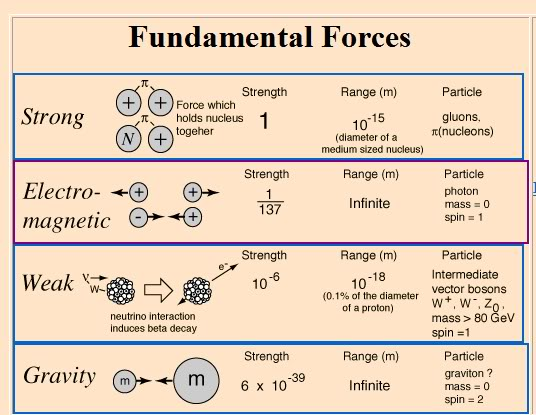
Now, strange it may seem, although we’ve known gravity ever since the apple fell on Newton’s head, it’s still the least understood of all the forces. So, what is it that we do not know?
The thing is that in order to understand these forces completely, we need to look at them at very small length scales. At small length scales, Quantum Mechanics comes into play. We have a theory known as Quantum Electrodynamics QED) that explains how Quantum Mechanics and Electrodynamics work together. QED is the most successful theory that we know. To give an example, there is a physical quantity in Electrodynamics called the magnetic moment, say of the electron, with a classical value of 2. When Quantum Mechanical effects are taken into account, this value increases to just over 2 (2.00115965218). The experimental value matches with the theoretical prediction to 12 decimal places.
There is a framework called Quantum Field Theory, which is used to explain all the remaining forces except Gravity. It so happens is that this framework fails for Gravitational Forces.
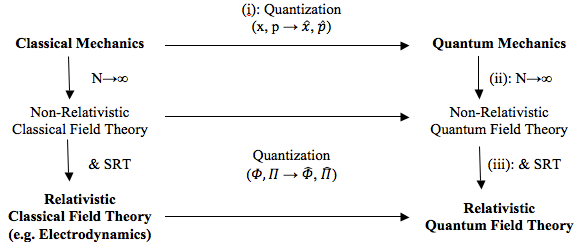
To explain why this happens, let’s go back to Quantum Field Theory. For example, two electrons are thrown at rach other and probabilities for various events are calculated. Since this is Quantum Mechanics we’re talking about, the probability of getting back two electrons might not necessarily be one, we may even get other particles like muons. So, after detailed calculations, it was seen that probabilities for certain events (when considering the number of ways it could happen through Feynman's Diagrams) come out to be infinite. Initially, Quantum Field Theory was considered inconsistent because of these infinities. However, eventually we found a way to make sense out of these infinities. With the mechanisms used to remove these infinities, we came across two types of infinities - removable and unremovable infinities.
In QED, these infinities can be removed and we have made amazing strides here by matching with experiments, as I just mentioned. But, there are some theories where these infinite probabilities are not removable. . These theories are sick theories i.e. those things do not have any physical significance. Gravity turned out to be a sick theory. This means that the language and mechanisms of the quantum field theory doesn't work on gravity. This poses a serious question on the quantum field theory because you cannot dismiss Gravity as a sick theory - it actually exists. So, we need to develop a new theory to give a quantum mechanical picture of gravity. That’s when String Theory comes into picture.
A term which is quite repeatedly coined around is “ The Theory of Everything ” i.e. a theory which seeks to explain all the four fundamental forces completely. String theory promises to be a Theory of Everything.
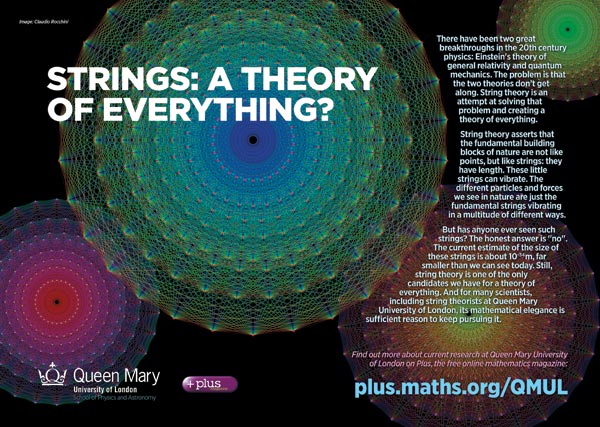
So, What is String Theory? Ever since we’ve studied Newton’s Laws, we’ve always treated objects to be constituted of point particles. All theories are based on this assumption. What String Theory does is that it rejects the notion of point particles and claims that fundamental particles are composed of extended one-dimensional objects i.e. tiny vibrating strings. These strings are so small that you can’t actually see them, that’s why they look like point particles to us. For e.g. If I take a piece of paper and fold it a lot of times. If your eyes are unable to resolve it, you’ll view it as a point particle. So, it depends upon the equipments used, whether or not you can see the dimensions of an object. To give you an estimate about how small a string is, consider measuring the distance between the Earth and Moon in terms of safety pins. Similar number of strings span a typical atom. In short, these strings are very very short. Now like in classical waves, we have modes of vibration. For e.g.. Fundamental, First Overtone, etc. Similarly in String Theory, each mode of these string forms a new particle.
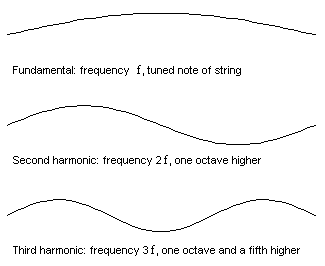
This is what String Theory tells us.
In String Theory, we use Special Theory of Relativity and Quantum Mechanics together as inputs, and we end up with a class of massless particles with spin 2. Clarifying the above part, we know that the quanta of an Electromagnetic field is a photon, which is a massless particle with spin 1. Similarly, if we try to quantize general relativity, the quanta we find is a massless particle of spin 2. So by considering strings instead of point particles, we end up with a theory of quantum gravity. Do we still get those nasty infinities we talked about earlier? No! The interesting thing is that when we apply String theory on the above process i.e. consider matter to be composed of strings and doing calculations, we get the same result without the infinities. String Theory is a very constrained theory, in the sense that you don’t have enough room to play around. These strings have predefined criteria defining the dimension in which they exist, they can’t exist in any arbitrary dimension. You may have heard about Bosons (particles like the photon) and Fermions(particles like electrons). To have a theory for Bosons, the String theory will be consistent only in 26 dimensions while in the case of Fermions, Superstring Theory is used which is consistent in 10 dimensions. The world we live in has four dimensions, three space dimensions and one time dimension. So how can we deal with something which has nine space dimensions?
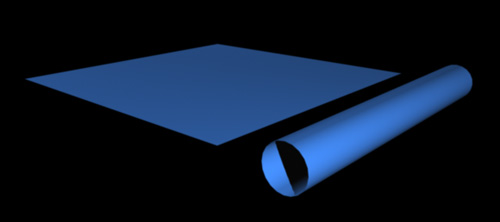
For that, let's look at a piece of paper. The paper spans two dimensions if we ignore its width. Now if we roll this sheet to make a cylinder, it still is in two dimensions if we look from the front. Now if we keep rolling the sheet to a point that it looks approximately like a single line when seen from the front, we’ve basically curled up two dimensions into one. Same is proposed in the String Theory is that the other space dimensions are curled up into three. They are there but we can’t see them.
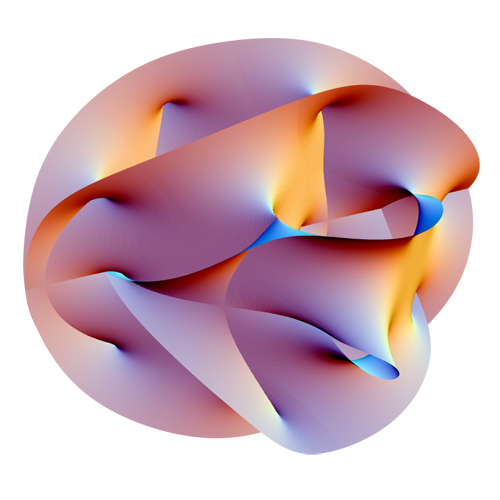
This idea is good but the problem faced by String Theory here is that in ten dimensions, the theory is unique. But there are innumerable consistent ways to get down from ten dimensions to four dimensions. So, in four dimensions there are a wide variety of possibilities, ie… you do not have a single real world. The main problem with this theory is that we do not have a unique path down from multiple dimensions. So a lot of work is yet to be done in this regard. However, if we look at the frameworks trying to link quantum mechanics and gravity, String Theory stands out for being able to give significant results and insights both in Physics and Mathematics. But we’re very far away from any experiments. One should have a reality check; even though this theory has given some exciting ideas, we are very far from claiming that this is the actual theory of nature. But it really is beautiful.
NERD: Sir, you said that dimensions are curled up in string. Is it theoretically possible to extract those dimensions?
Prof. Bagchi: Yeah, theoretically it is possible. Doing some maths will give you the idea about the dimensions but we don’t have any physical experiments to back this. People are actually trying to find more about this in experiments like Large Hadron Collider. But at the moment, if you ask me, experimental verifications are very far away.
NERD: So, what does this theory hold for us? What if we DO find experimental verification for the String Theory? Prof. Bagchi: Then we’ve quantized gravity! We’ll have a framework which helps us deal with all four forces at one go. This is why people are so very excited with it. If this really comes out to be true, we may be able to find out what actually happened at the time of Big Bang, what happens inside the black hole and various such very interesting questions. A lot of things which seem very difficult to deal with may get easier to understand.
NERD: Thank you for your time Sir. It was quite an experience talking to you!

 © Nerd Magazine, IIT Kanpur,2017. All rights reserved.
© Nerd Magazine, IIT Kanpur,2017. All rights reserved.
Comments
comments powered by Disqus